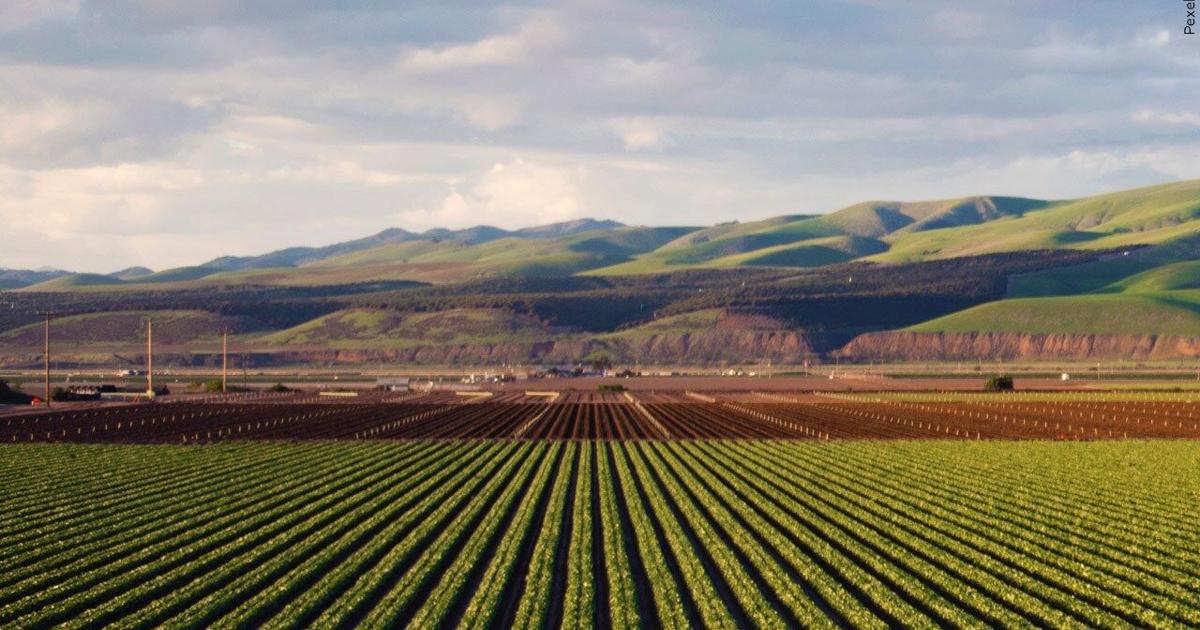
Dryland Farming in Arizona

Introduction
Dryland farming is a popular method used in areas where water is expensive or where people rely on winter crops that do not require artificial irrigation. However, this method may become increasingly difficult in Arizona due to various factors.
Sustainable Development Goals (SDGs)
- Goal 2: Zero Hunger
- Goal 6: Clean Water and Sanitation
- Goal 13: Climate Action
Challenges for Dryland Farming in Arizona
- Limited water availability
- Changing weather patterns
- High temperatures during summer
Impact on Farmers and Indigenous Communities
Farmers in Arizona are concerned about the changing weather patterns and the impact it may have on dryland farming. The Tohono-O’odham natives, who have relied on this method for thousands of years to grow crops such as prickly pears, squash, and beans, are also facing challenges due to the increasingly hot and dry conditions.
Record-breaking Heat
In 2020, Arizona experienced a record number of triple-digit heat days, and last year set a record for the most 110-degree days. These high temperatures pose a threat to crops, as they may die before the monsoon rains arrive to provide relief.
Water Scarcity
The scarcity of water is another factor working against dryland farmers in Arizona. The depletion of water sources such as Lake Mead and the reservoir behind Glen Canyon Dam highlights the urgent need for sustainable water management.
Solutions and the Role of Sustainable Development Goals (SDGs)
To overcome these challenges and support dryland farming in Arizona, it is crucial to work towards achieving the following SDGs:
- Goal 2: Zero Hunger – Promote sustainable agricultural practices and ensure food security for all.
- Goal 6: Clean Water and Sanitation – Implement sustainable water management strategies to ensure access to clean water for farming.
- Goal 13: Climate Action – Take measures to mitigate climate change and adapt to its impacts, including supporting resilient farming methods.
Additionally, a more consistent rainfall pattern during winter, paired with the monsoon storms during summer, would greatly benefit dryland farmers in Arizona.
SDGs, Targets, and Indicators
-
SDG 2: Zero Hunger
- Target 2.4: By 2030, ensure sustainable food production systems and implement resilient agricultural practices that increase productivity and production, that help maintain ecosystems, that strengthen capacity for adaptation to climate change, extreme weather, drought, flooding, and other disasters, and that progressively improve land and soil quality.
-
SDG 6: Clean Water and Sanitation
- Target 6.4: By 2030, substantially increase water-use efficiency across all sectors and ensure sustainable withdrawals and supply of freshwater to address water scarcity and substantially reduce the number of people suffering from water scarcity.
-
SDG 13: Climate Action
- Target 13.1: Strengthen resilience and adaptive capacity to climate-related hazards and natural disasters in all countries.
- Target 13.3: Improve education, awareness-raising, and human and institutional capacity on climate change mitigation, adaptation, impact reduction, and early warning.
- Target 13.A: Implement the commitment undertaken by developed-country parties to the United Nations Framework Convention on Climate Change to a goal of mobilizing jointly $100 billion annually by 2020 from all sources to address the needs of developing countries in the context of meaningful mitigation actions and transparency on implementation and fully operationalize the Green Climate Fund through its capitalization as soon as possible.
Analysis
The article discusses the challenges faced by dryland farmers in Arizona due to the changing climate and water scarcity. Based on the content, the following analysis can be made:
1. SDGs addressed or connected to the issues highlighted in the article:
The issues highlighted in the article are connected to the following SDGs:
- SDG 2: Zero Hunger – The article mentions the impact of changing climate and water scarcity on agricultural practices, which can affect food production and contribute to hunger.
- SDG 6: Clean Water and Sanitation – The article highlights the importance of water availability for dryland farming and mentions the risk of water scarcity.
- SDG 13: Climate Action – The article discusses the impact of climate change on dryland farming and emphasizes the need for resilience and adaptive capacity.
2. Specific targets under those SDGs based on the article’s content:
- Target 2.4: By 2030, ensure sustainable food production systems and implement resilient agricultural practices that increase productivity and production, that help maintain ecosystems, that strengthen capacity for adaptation to climate change, extreme weather, drought, flooding, and other disasters, and that progressively improve land and soil quality.
- Target 6.4: By 2030, substantially increase water-use efficiency across all sectors and ensure sustainable withdrawals and supply of freshwater to address water scarcity and substantially reduce the number of people suffering from water scarcity.
- Target 13.1: Strengthen resilience and adaptive capacity to climate-related hazards and natural disasters in all countries.
- Target 13.3: Improve education, awareness-raising, and human and institutional capacity on climate change mitigation, adaptation, impact reduction, and early warning.
- Target 13.A: Implement the commitment undertaken by developed-country parties to the United Nations Framework Convention on Climate Change to a goal of mobilizing jointly $100 billion annually by 2020 from all sources to address the needs of developing countries in the context of meaningful mitigation actions and transparency on implementation and fully operationalize the Green Climate Fund through its capitalization as soon as possible.
3. Indicators mentioned or implied in the article:
The article does not explicitly mention specific indicators. However, some indicators that can be implied from the content include:
- Number of dryland farming practices implemented
- Water-use efficiency in agriculture
- Frequency and intensity of climate-related hazards and natural disasters
- Education and awareness levels on climate change mitigation and adaptation
- Financial commitments and investments in climate change mitigation and adaptation
Table: SDGs, Targets, and Indicators
| SDGs | Targets | Indicators |
|---|---|---|
| SDG 2: Zero Hunger | Target 2.4: By 2030, ensure sustainable food production systems and implement resilient agricultural practices that increase productivity and production, that help maintain ecosystems, that strengthen capacity for adaptation to climate change, extreme weather, drought, flooding, and other disasters, and that progressively improve land and soil quality. | – Number of dryland farming practices implemented – Land and soil quality improvement measures |
| SDG 6: Clean Water and Sanitation | Target 6.4: By 2030, substantially increase water-use efficiency across all sectors and ensure sustainable withdrawals and supply of freshwater to address water scarcity and substantially reduce the number of people suffering from water scarcity. | – Water-use efficiency in agriculture – Number of people suffering from water scarcity |
| SDG 13: Climate Action | Target 13.1: Strengthen resilience and adaptive capacity to climate-related hazards and natural disasters in all countries. Target 13.3: Improve education, awareness-raising, and human and institutional capacity on climate change mitigation, adaptation, impact reduction, and early warning. Target 13.A: Implement the commitment undertaken by developed-country parties to the United Nations Framework Convention on Climate Change to a goal of mobilizing jointly $100 billion annually by 2020 from all sources to address the needs of developing countries in the context of meaningful mitigation actions and transparency on implementation and fully operationalize the Green Climate Fund through its capitalization as soon as possible. |
– Frequency and intensity of climate-related hazards and natural disasters – Education and awareness levels on climate change mitigation and adaptation – Financial commitments and investments in climate change mitigation and adaptation |
Behold! This splendid article springs forth from the wellspring of knowledge, shaped by a wondrous proprietary AI technology that delved into a vast ocean of data, illuminating the path towards the Sustainable Development Goals. Remember that all rights are reserved by SDG Investors LLC, empowering us to champion progress together.
Source: kvoa.com

Join us, as fellow seekers of change, on a transformative journey at https://sdgtalks.ai/welcome, where you can become a member and actively contribute to shaping a brighter future.






